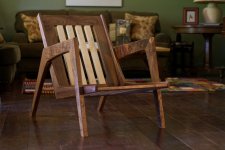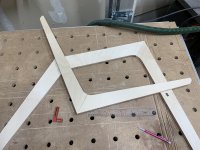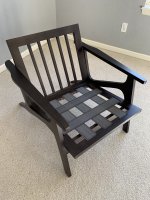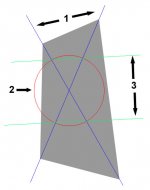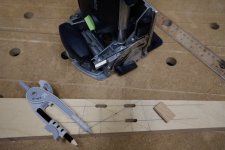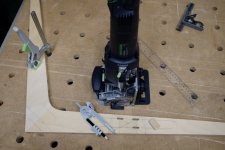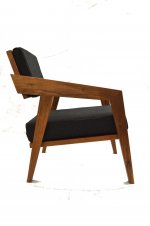I came across a YouTube woodworker's channel and really like this design of chair he made in one video:=2s
I'm in the process of making something really similar and I've got all the parts of my plywood prototype made and just need to attach the legs to the seat, but not sure how to accurately cut the dominos in the legs and seat? I asked the guy who made the video and he got back to me, but I'm still struggling with how to accurately layout where to cut the mortises. At the 6:28min mark in his video he starts this process so you can clearly see what I'm talking about.
Does anyone have suggestions or videos I can watch to learn how to mark out the domino placement in joints like this?
Thanks! (btw, if you're into watching youtube woodworkers I've found this fellow to be really inspirational and love his general demeanor) [attachimg=1]
I'm in the process of making something really similar and I've got all the parts of my plywood prototype made and just need to attach the legs to the seat, but not sure how to accurately cut the dominos in the legs and seat? I asked the guy who made the video and he got back to me, but I'm still struggling with how to accurately layout where to cut the mortises. At the 6:28min mark in his video he starts this process so you can clearly see what I'm talking about.
Does anyone have suggestions or videos I can watch to learn how to mark out the domino placement in joints like this?
Thanks! (btw, if you're into watching youtube woodworkers I've found this fellow to be really inspirational and love his general demeanor) [attachimg=1]

